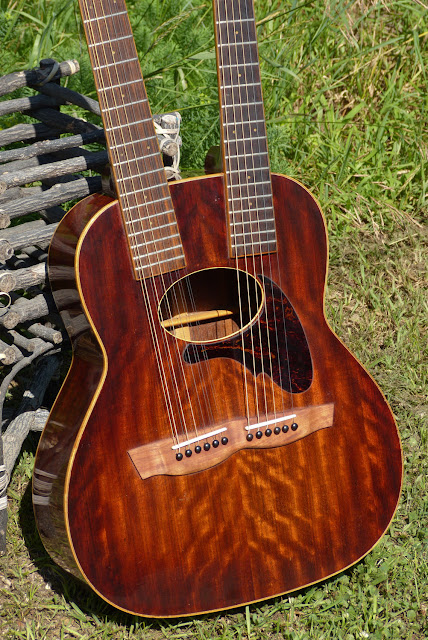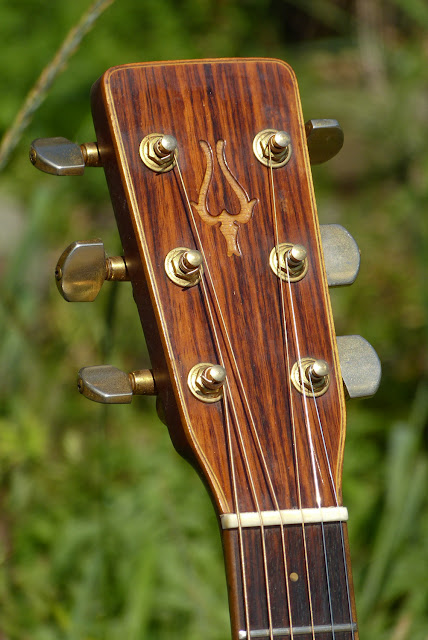1981 Daion Double-Neck Acoustic Guitar
Wild, right? I worked on this guitar years ago but since then the original bridge split and my skills have increased many-fold. I recently made a new bridge (from figured mahogany, like the top), glued it up with some additional ebony bridge plates for stiffening purposes, and then did-up the frets and got this back into playing order. It's strung with regular lights on the 6-string neck and gauges essentially the same as an electric set (46w-9) on the 12-string neck. That means that this can be tuned-up to pitch on both necks with the top healthy and happy about it.
As you'd expect -- it has an enormous, rich, tone -- despite having an all-laminate body. There's no way you can do-away with the "natural reverb" that 18 strings of overtones will produce. It's interesting to play in that you have to sort-of think about that when you're going about your business on this guitar.
Daions were only built for a few years in the late 70s/early 80s and they've earned a reputation, over time, as fantastic quality instruments for folks who don't want to spend too much. Their designs are also all interesting and more along the lines of "boutique" instruments despite being production builds.
This guitar has a laminate mahogany body with figured veneer on the top, mahogany necks, and rosewood boards. The binding is maple and the original bridge was rosewood but I replaced it with some 30+ year-old figured mahogany from my wood pile as I thought it looked better with the guitar than any of the rosewood I had on hand.
Daions are all Martin-scale (25.4") as far as I know and the 12-string neck still has its original brass nut.
I've made-up a special set of strings for the 12-string side gauged: 24w/46w, 17/36w, 11/26w, 8/19, 13/13, 9/9. This is a lot like an electric 12-string set and has both Gs unwound.
The 6-string neck has a new bone nut and a solid headstock.
Another Daion trademark is to use brass inlay all over the place -- like the dots, here.
I like that almost-1920s pickguard shape. The oval soundhole also recalls weirdo Gibson guitars of the teens.
I used one pin for each of the string pairs on the 12-string side because, frankly, I hate yanking 12 pins to swap strings. I added string ramps to guide the strings instead. The saddle on the 12-string side is fully compensated for each string, too, and for the unconventional unwound G-string pairs.

























Comments
I was at the factory
I spent $1,500 dlrs / what's its value now?
I've spent two years looking for someone to repair the Bridge (and clean up my guitar. It seems to scare most young luthiers.
Feel free to contact me through my email address ...